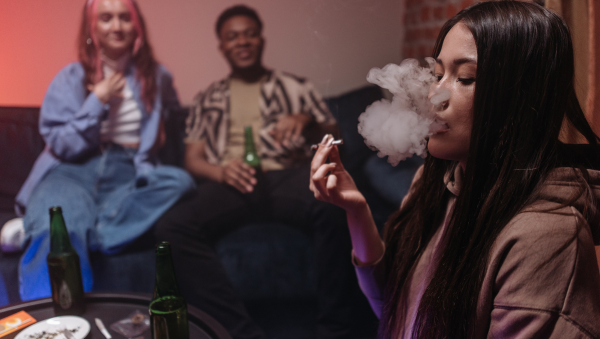You’re probably at least somewhat acquainted with the “golden age” of marijuana consumption, when free love ruled in the Haight Ashbury neighborhood of San Francisco during the 1960s, and hippies got stoned while listening to the music of The Doors, Led Zeppelin, and Jimi Hendrix.
Regardless of the lore you might have heard about this period, there is no doubt that marijuana was less potent back then – much less potent. One of the main reasons was the quality of the products available. Today, marijuana is legal for medical reasons in 35 states and counting, meaning that breeders, are more than ever, apt to experiment in an age of stiff competition where only the best possible product will do.
In the 1990s, the average THC content in marijuana was 4 percent. (THC, tetrahydrocannabinol, is the active ingredient in cannabis that produces euphoric dissociation). By 2014, it averaged approximately 14 percent, while today’s highly concentrated marijuana averages out at 40 percent, but can be as high as 90 percent!
I’ve studied and researched marijuana for years now, and heretofore have taken a neutral position on the substance, but no more. If adults use marijuana either legally or recreationally, so be it, it’s their choice, and in so choosing, they take on the associated risks – which are greater than ever. Adult users report increasing difficulty with regulating the euphoric effects due to elevated THC counts, thus rendering the drug less tolerable and desirable.
Adolescents using it? This is a very different story nowadays and particularly troublesome because the prefrontal cortex area of the brain – which is responsible for reasoning, decision making, and managing impulsivity doesn’t fully develop until approximately age 25. This is why kids do so many dumb things with little to no regard for the possible risks involved, including marijuana use.
Even though you’ve told your adolescent son, for example, or a 14-year-old freshman you’re working with who has anxiety issues, to keep their distance from marijuana because it’s stronger and more dangerous than ever, he finally succumbs to intense peer pressure, smokes marijuana for the first time and experiences a feeling he has never had before. It wasn’t as dangerous as he thought, and he felt great. He continues using, and now fully immersed in the marijuana experience, begins to lose interest in other aspects of his life, stops playing sports, and finds himself stripped of motivation because when he’s smoking, he has no interest in anything else, especially schoolwork. He’s now failing 2 classes, with a D grade in another. Nothing I’m referring to here is new – kids have been smoking marijuana for decades – but not at this potency.
The example I just provided above is preventable, but it requires plenty of work and vigilance on our part. We must consistently watch our kids while they’re young and be vigilant about alerting the parents of young people we work with to have zero tolerance for drug use, including marijuana, more than ever. Yes, of course, youth will roll their eyes and think we’re overreacting, but they haven’t developed enough to know better.
Harder core substance abusers without exception begin with marijuana first. It’s not a benign gateway drug in any way anymore, and although it happens gradually, it can destroy lives just like the so-called “more dangerous” drugs do.
Attribution Statement:
Joe Wegmann is a licensed pharmacist & clinical social worker has presented psychopharmacology seminars to over 10,000 healthcare professionals in 46 states, and maintains an active psychotherapy practice specializing in the treatment of depression and anxiety. He is the author of Psychopharmacology: Straight Talk on Mental Health Medications, published by PESI, Inc.
To learn more about Joe’s programs, visit the Programs section of this website or contribute a question for Joe to answer in a future article: joe@thepharmatherapist.com.
